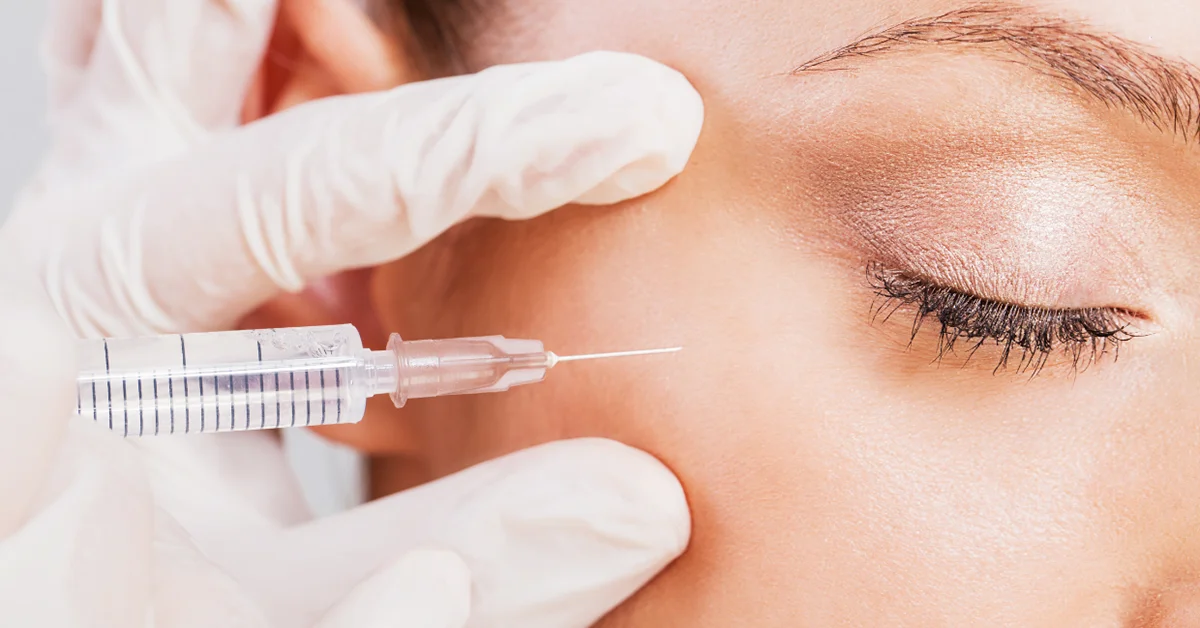For 20 years, Botox has been FDA-approved to smooth wrinkles, with approximately 100 million vials sold in the United States alone since 2002. Pharmaceutical companies traditionally advise a standard injection pattern and dose applied uniformly across all patients. If you have received a Botox (or Dysport) treatment before, this standard prescription has likely been used on you. While this may improve some lines and wrinkles, this technique can lead to other less desirable changes. I’m not just talking about a dreaded droopy eyelid, although we certainly avoid that. If your Botox treatment is not individualized to you, sub-optimal appearances such as a heavy brow, a shiny forehead, or puffiness around the eyes can occur.
New Research Giving Better Results with Facial Injectables
We have learned over the years that there is a fair bit of nuance involved when using Botox to treat facial wrinkles and that staying up to date on the latest trends and advancements is best practice. There is new research in anatomy that helps us understand some common unwanted outcomes and how best to avoid them.
A comprehensive understanding of facial anatomy and the unique anatomical variants of individual patients is essential to creating smooth, refreshed, natural-appearing results.
Botox for Forehead Rows
The frontalis muscle, the muscle covering most of the width of the forehead, is one of the more challenging muscles to treat well. It is responsible for raising the eyebrows when shocked or surprised; for some, it helps elevate a heavy eyelid for a more bright-eyed appearance. Since the frontalis is one of the largest muscles of facial expression, any changes are on display, front-and-center. The subtlest asymmetry on the forehead can result in an “I know you had Botox” unwanted appearance. What you need to know as an injector is that there is significant variation in the shape of the frontalis muscle between individuals, and it tends to become overactive in areas that do not receive adequate treatment. This phenomenon forms a “Spock brow” or overly arched brow – as in the captain of Star Trek’s brows, not a good look. In addition, the lower part of the frontalis muscle is responsible for elevating the brow. If the frontal muscle is treated too close to the brow line, it can result in a heavy-browed appearance.

Allergen image
Botox for the “11’s”
Three muscles lie anatomically underneath the eyebrows, the procerus muscle, and two corrugator muscles. Collectively these muscles are referred to as the glabella. These muscles pull the brows together and down when creating a scowling gesture and are responsible for the “11’s” lines or “resting bitch face.” Treating the glabella with Botox relaxes these muscles, elevating the brow and smoothing the lines between the brow, resulting in a well-rested, bright-eyed appearance.

Allergen image
Best Practice Injection Techniques
Injection Depth
Because many facial muscles overlap, injection depth is critical to more precision in treating the targeted muscle with botulinum toxin and avoiding the bystanders. For example, injecting the glabella muscles at a shallow depth can inadvertently impact the lower frontalis muscle fibers resulting in eyebrow droop. Thus, treating the head the corrugator muscles and the procerus muscle at a deeper level is a “best practice” updated treatment technique. Something to note, the corrugator muscles stretch out laterally over the brow with the tail end located just under the skin; a shallower depth is best practice for this area. Botox can spread inferiorly and cause eyelid drooping if this area is injected more deeply. Injections placed too deeply in the frontalis muscle can spread botulinum toxin down the forehead, where it relaxes the lower muscle fibers and creates heaviness of the brow. A shallower depth is best here as well.
Injection Location
Injectors must know both generalized facial anatomy as well as your individualized facial anatomy for optimal results. For example, a Brow Lift in which the lateral portion of the eyebrow can be elevated by injecting Botox must be injected accurately according to your anatomy. If the injection point is too close to the brow, it can impact the frontalis muscle fibers and cause this area to descend rather than lift. Some other location issues that arise include but are not limited to injections too low in the forehead or failing to treat the lateral aspects of the frontal muscle. What is a good way to assess individual anatomy? Having clients tense or contract their muscles before injecting helps visualize the musculature.
Injection Dilution
Botox (and Dysport) arrive as a sterile powder from the manufacturer. The provider reconstitutes this powder with saline to create the treatment solution that is injected. The amount of saline used to reconstitute the botulinum toxin can be varied depending on the area being treated and the desired effect. Using a more dilute reconstitution allows your provider to modulate the effect to get fine wrinkles to soften without causing too much muscle weakness in key areas. For example, if there is a small wrinkle located in the lower forehead, this is best treated with a more diluted solution at a more superficial depth to achieve a modulated effect on the muscle to smooth the skin without causing excessive muscle weakness that could make the brow droop.
Injection Dose
When treating wrinkles, Botox is measured in units. Varying the number of units, rather than using the standard recommendation, is another way to optimize the result. Higher doses will relax more muscle fibers and result in a longer duration of effect. They also have a freezing effect that some patients desire and others do not. It is a personal preference. Many of our patients want to maintain at least some degree of facial movement and prefer using a moderated dose to achieve this result. Noteworthy is that the duration of the effect may be shorter in a lowered dose.
At Aluma Aesthetic Medicine, we utilize new and noteworthy research to guide better Botox injection techniques and maximize the beautiful, well-rested, natural appearance our patients seek.
Asking the question, “Where can I get nuanced Botox injections near me?” If you are in Portland, Oregon, or our surrounding suburbs,

